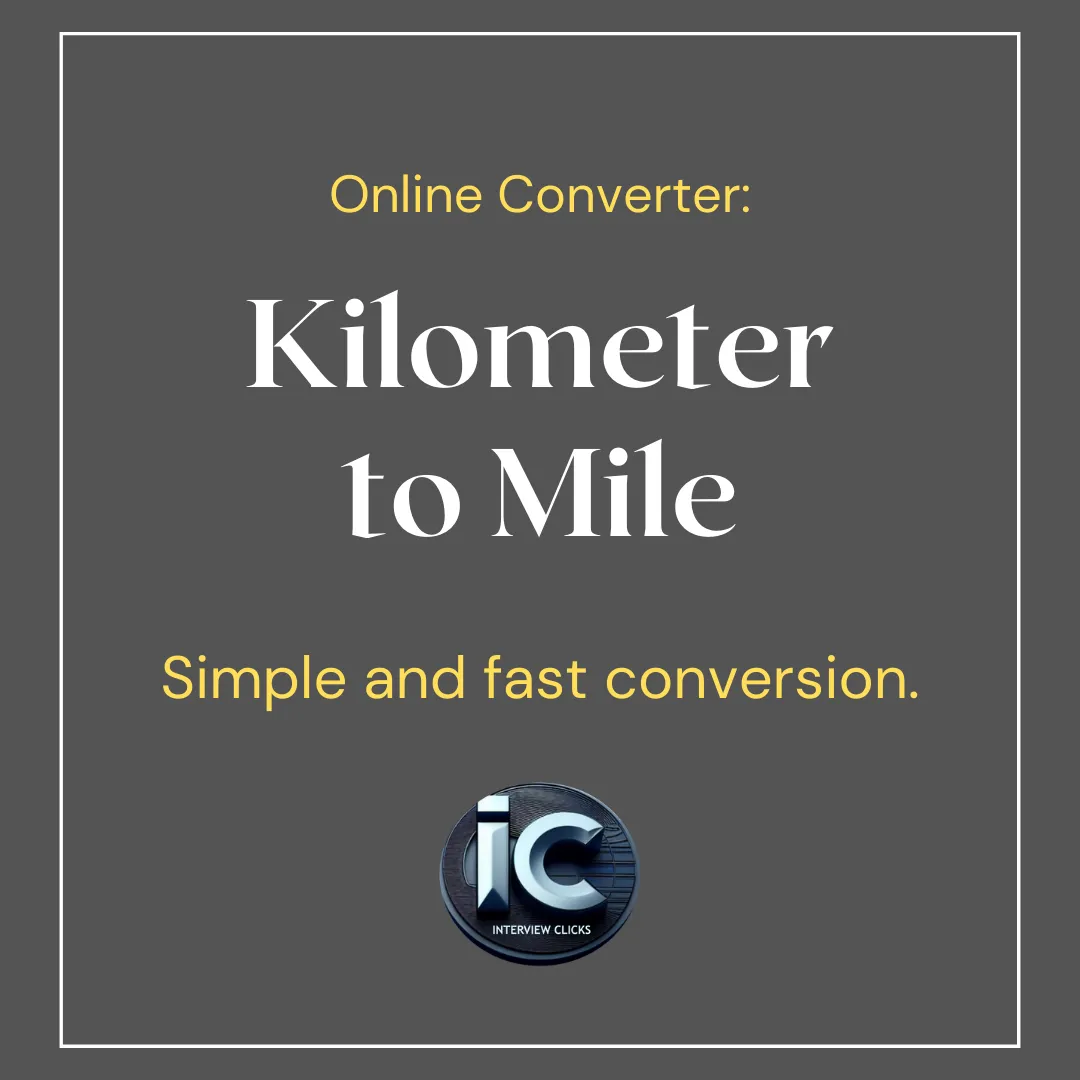Kilometer to Mile Converter
Understanding KM to Miles: A Unit Breakdown
The world primarily utilizes two main measurement systems for distance: the metric system and the imperial system. Kilometers (km) are the fundamental unit of distance within the metric system, whereas miles (mi) are the go-to unit in the imperial system.
Here’s a quick breakdown to solidify their positions:
- Kilometers (km): The metric system’s base unit for distance. One kilometer is roughly equivalent to 1000 meters, a unit commonly used for shorter distances.
- Miles (mi): The imperial system’s standard unit for distance. There are three primary types of miles: the statute mile, the nautical mile used in navigation, and the international mile, which is identical to the statute mile.
The conversion factor between kilometers and miles is approximately 0.6214. This means that 1 kilometer is equal to roughly 0.6214 miles.
Why Use a KM to Miles Converter?
Whether you’re navigating a foreign city, tracking your running progress, or simply curious about converting distances, a Kilometer to Mile converter proves to be a valuable tool in various scenarios. Here are some compelling reasons to utilize this handy converter:
- Travel Planning: Imagine meticulously planning your dream vacation itinerary, only to be met with distances displayed in kilometers. A converter allows you to effortlessly translate those distances into familiar miles, aiding in visualizing travel distances, planning routes, and estimating travel times.
- Fitness Tracking: Many fitness apps and trackers default to kilometers for recording distances. If you’re more comfortable gauging your progress in miles, a converter helps you understand the actual distance covered during your runs, walks, or bike rides.
- Recipe Conversions: International recipes sometimes incorporate ingredient quantities based on metric units. A converter can be instrumental in converting these quantities to their imperial equivalents, ensuring accurate measurements and successful culinary endeavors.
- General Knowledge Expansion: Understanding unit conversions fosters a broader understanding of the world around you. By using a converter, you become more comfortable with both measurement systems and develop a sharper sense of scale when encountering distances.
Introducing Your User-Friendly Kilometer to Mile Converter
Now that you appreciate the significance of a Kilometer to Mile converter, let’s delve into how to use the one provided here:
- Input the Distance in Kilometers: Locate the designated field labeled “Kilometers” or “Km.” Here, you’ll enter the distance value you want to convert.
- Click the Convert Button: Once you’ve entered the distance in kilometers, simply click the “Convert” button.
- View the Equivalent Distance in Miles: The converter will instantly display the corresponding distance in miles within the designated “Miles” or “Mi” field.
This user-friendly converter offers a quick and effortless solution for all your KM to Miles conversion needs.
Beyond Conversion: Tips for Estimating Distances
While a converter provides precise results, there are situations where a rough estimate might suffice. Here are some helpful tips for approximating distances when you don’t have a converter handy:
- Visualize Familiar Distances: Think of a standard distance you’re comfortable with, like a running track (typically 400 meters) or a city block (around 400 meters). Use this mental image to estimate larger distances in kilometers.
- The Power of 1.6: Remember that 1 mile is roughly equivalent to 1.6 kilometers. This can be a handy rule of thumb for quick conversions. For instance, to estimate 5 kilometers in miles, divide 5 by 1.6 (approximately 3.1 miles).





